The Impact of Donations on Endangered Animal Preservation
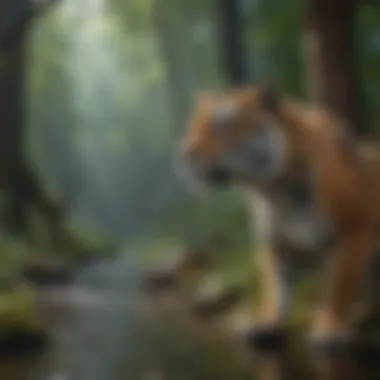
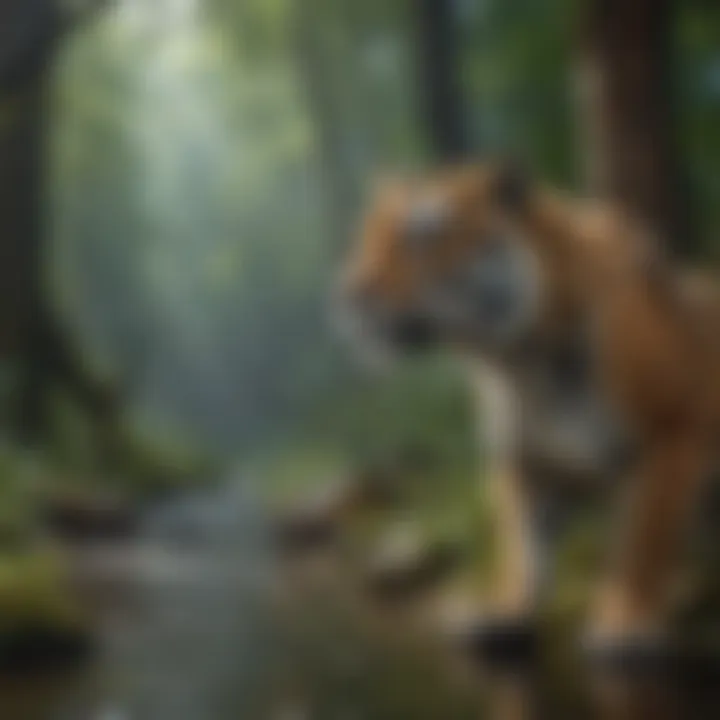
Overview of the Topic
The fate of endangered animals hangs by a thread, and donations are lifelines that help keep the thread from snapping. Many people may wonder why a bit of financial support can make such a difference in conservation efforts. Well, think of it like this: even the mightiest trees in a forest rely on the smallest of seeds to grow. Donations, whether from individuals or companies, are those seeds that sprout into larger conservation initiatives. They fund everything from habitat preservation to anti-poaching measures, each donation adding up to create a more sustainable future for our planet.
Importance of the Topic
The world is home to numerous species on the brink of extinction. Organisations dedicated to their preservation often depend heavily on the generosity of donors. Financial support not only helps in combatting immediate threats to wildlife but also aids long-term conservation strategies. This intertwines the health of our ecosystems with human compassion and responsibility. Without this funding, many initiatives would stall, leading to irreparable damage to biodiversity, which ultimately affects humanity itself.
Current Status and Challenges
Current State of Endangered Species
As of now, over 40% of amphibians and 25% of mammals are classified as endangered. As urban development expands at an alarming pace, natural habitats are disappearing faster than one can blink. This constant pressure on wildlife has led to negative consequences like habitat destruction, climate change, and human-wildlife conflict. Animals like the Sumatran orangutan and the Amur leopard are standing on the precipice of extinction, and their plight serves as a somber reminder of our impact on the environment.
Challenges and Threats
Several forces are at play here:
- Habitat Loss: Rapid urbanization and deforestation are consuming the homes of various species.
- Poaching: Illegal hunting for profit continues to threaten the lives of many animals, notably elephants and rhinos.
- Climate Change: Shifts in climate are affecting habitats, making them uninhabitable for some species.
Donations can help alleviate these pressures by directing funds towards initiatives that tackle these challenges head-on, but there remains an uphill battle.
Sustainable Solutions
Practices to Address Issues
Many wildlife reserves and fundraising organizations strive to provide sustainable solutions. Here’s a look at effective methods they employ:
- Community Engagement: Involving local populations fosters a sense of ownership for wildlife, allowing them to benefit from preservation efforts.
- Education Programs: Raising awareness and educating the public about endangered species encourages donations and activism.
- Wildlife Corridors: Establishing safe migration paths ensures that animals can roam freely without risking human conflict.
Successful Case Studies
Let’s take a moment to highlight some inspirational projects:
- Born Free Foundation’s Lion Rescue: Donations helped relocate lions from cramped enclosures to sprawling sanctuaries, allowing them space to roam and adapt.
- WWF's Texas Coastal Conservation: With generous support, this initiative has restored critical habitat for endangered sea turtles, ensuring that they have nesting grounds safe from development.
Impact and Importance
Analysis of Impact on Ecosystems and Communities
The ripple effect of effective conservation goes far and wide. When endangered species are preserved, entire ecosystems benefit; a balanced ecosystem maintains natural processes that foster biodiversity. Furthermore, communities relying on natural resources are often financially uplifted through eco-tourism that stems from conservation efforts. Healthy wildlife populations directly correlate with sustainable resource use, benefiting both people and planet.
Emphasizing Conservation Efforts
"The survival of the fittest is today lost to the survival of the kindness."
It’s crucial for both individual and corporate donors to see their contributions not merely as acts of charity but as integral investments in our shared future. Whenever we put our money where our values lie, we take significant steps towards a world where both humans and wildlife can thrive.
The Urgency of Endangered Animal Conservation
The world is not the same as it was a hundred years ago. Wildlife is retreating and facing an uphill battle to survive, making conservation a primary matter of urgency. This section delves into why the conservation of endangered animals shouldn't just be a footnote in the larger discussion of environmental issues, but rather a headline need for our society.
Defining Endangered Species
At the heart of conservation lies the concept of "endangered species." Essentially, these are species that are at risk of extinction, primarily due to human-induced factors. To be classified as endangered, a species must meet particular criteria. This often involves population decline and a diminishing habitat. It’s not just about saving the furry and exotic; it touches the whole ecosystem, where every creature plays its part.
Statistics on Endangered Species
Numbers paint a stark picture. According to the World Wildlife Fund, more than 28,000 species currently face extinction. This statistic isn’t merely a number—it’s a clarion call highlighting the remnants of our natural heritage fading away. From the majestic Bengal tiger to the once-flourishing passenger pigeon, the march towards extinction doesn’t come at a standstill. Instead, it speeds up, creating a cascade effect that impacts all forms of life.
Threats Facing Endangered Species
Habitat Destruction
Habitat destruction is perhaps one of the most pressing issues at hand. When forests are cut down or wetlands drained to make space for human development, creatures that once roamed freely find themselves without a home. This sheds light on why habitat preservation is crucial for conservation efforts. In many ways, it serves as the foundation of the entire conservation framework. By destroying the habitat, even the healthiest population can plummet into trouble—losing food sources, shelter, and breeding grounds.
Poaching and Illegal Trade
Then, there’s poaching. The black market for animal parts has become a booming business. Whether it’s the tusks of elephants or the scales of pangolins, demand fuels this destructive practice. The allure of profit incentivizes acts that not only threaten individual species but disrupt entire ecosystems. It's disheartening to realize that many animals' fates lie in the hands of those driven by greed rather than conservation.
Invasive Species Impacts
Invasive species pose another threat, often overshadowed by more conspicuous dangers. When non-native species take hold in a new environment, they can outcompete local wildlife for resources. This often leads to native populations being pushed out, sometimes even leading to extinction. For instance, the introduction of the grey squirrel to the UK is responsible for the notable decline of the native red squirrel. This just goes to show, even small changes in the ecosystem can result in grand consequences.
Climate Change Effects
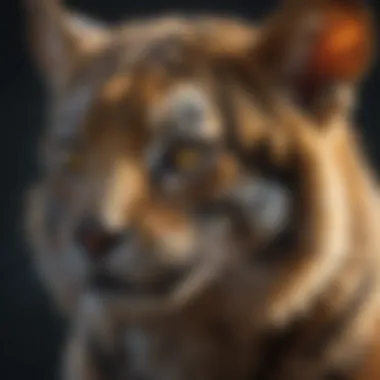

Climate change adds yet another layer of complexity. Shifting temperature and weather patterns contribute to habitat fragmentation and altered migration routes. Species that cannot adapt fast enough face dire straits. In many ways, climate change acts like a slow, but relentless predator, targeting the weak spots of endangered species.
"We don't inherit the earth from our ancestors; we borrow it from our children." – Native American Proverb
Our role in conservation is not just a task for today; it directly shapes the future of biodiversity. By understanding all these threats, we can frame our thinking on how crucial donations are in aiding not just specific species but the intricate web that binds life on our planet.
The Role of Donations in Conservation Efforts
Donations play a pivotal role in safeguarding endangered species and their habitats. These contributions provide critical funding and resources necessary for various conservation initiatives. With the clock ticking for many species, the impact of financial aid cannot be overstated—it can mean the difference between survival and extinction.
Funding Conservation Programs
Funding is essential for implementing effective conservation programs. Without monetary support, even the best-laid plans remain just that—plans without action.
Direct Funding Mechanisms
Direct funding mechanisms are a cornerstone in the conservation realm. They allow organizations to receive immediate funds to support their efforts. This kind of funding is particularly vital during urgent situations, such as natural disasters that may affect wildlife habitats.
A key characteristic of this approach is its direct transfer of money to an organization’s operational activities.
"When the need arises, quick access to funds can empower a project in ways that might surprise many."
The unique feature of direct funding is its simplicity and speed. Charitable donations can be funneled rapidly into wildlife rescue operations or enforcement against poaching. However, it’s important to note that reliance on direct funding can also lead to issues, such as uneven distribution of funds, where certain initiatives might receive more attention than others merely based on trends or donor interest.
Challenge Grants and Matching Donations
Challenge grants and matching donations offer a different strategy that can amplify the impact of individual contributions. This model incentivizes donations by essentially doubling the impact—a donor’s contribution might get matched if a particular fundraising target is met.
The key characteristic of this method lies in its ability to motivate potential donors. For instance, if they know their donation will unlock additional funding, they feel more driven to contribute.
The unique feature of challenge grants is the potential for increased community involvement and excitement around fundraising efforts. They can, however, also introduce challenges. If the match is not met, funds might be left hanging, potentially leaving critical projects underfunded during key times.
Facilitating Research and Education
The role of donations extends beyond just funding immediate conservation projects. Effective conservation requires robust research and public engagement.
Field Research Grants
Field research grants are particularly vital as they provide the financial backing needed for scientists and wildlife experts to study endangered species in their natural habitats. These grants often cover fieldwork costs, equipment, and sometimes personnel expenses.
One characteristic that sets field research apart is its focus on generating knowledge that directly influences conservation strategies. Well-informed choices are essential for long-term sustainability of any conservation efforts. Yet, the downside may involve considerable time lags between grant approval and the actual collection and analysis of data.
Awareness Campaigns
Awareness campaigns serve a dual purpose: they educate the public about conservation while also driving funding opportunities. By raising awareness about issues facing endangered species, donations can be more easily solicited and justified to potential contributors. A key characteristic of these campaigns is their ability to change perceptions among the general public, which can ultimately lead to increased support.
These campaigns often leverage stories and visuals to create a compelling narrative about conservation needs. The unique feature here is that they foster community involvement and emotional connections with wildlife, creating an environment where donations become a natural part of civic duty. On the flip side, however, keeping the message engaging and not overly sensationalized can be quite a balancing act.
Understanding Donor Motivations
Understanding the factors that drive individuals and organizations to contribute to conservation efforts is crucial for the ongoing battle to save endangered species. Donor motivations can significantly impact the types and amounts of donations received, thus shaping the overall success of conservation initiatives. These motivations can range from emotional connections to wildlife to a sense of social responsibility. Recognizing these motivations not only informs fundraising strategies but also enhances relationships between conservation projects and their supporters. A deeper understanding of these motivations facilitates targeted campaigns that resonate with potential benefactors, ensuring sustained financial support for conservation efforts over the long haul.
Emotional Connections to Wildlife
Emotional connections to wildlife often serve as a primary motivator for donations. Many individuals feel a strong affinity towards particular species, whether through personal experiences, childhood memories, or even exposure through documentaries. Such connections drive people to take action, translating that passion into financial contributions. For instance, someone who encounters a species like the Amur leopard in a wildlife documentary may feel inclined to support its conservation due to both empathy and a personal link forged through the narrative.
Moreover, sharing stories about endangered species can evoke powerful imagery and emotions that compel people to donate. When conservation organizations effectively tell these stories, they create a bridge between donors and the issues at hand. Forgetting risks resulting from emotional engagement can happen, leading to generous contributions that foster significant change in habitats or in populations needing rescue.
Influence of Social Responsibility
In today's world, the concept of social responsibility plays a considerable role in motivating donations to conservation efforts. Many individuals and businesses feel a moral obligation to contribute to the betterment of society and the environment. This sense of duty often directs resources toward initiatives like wildlife conservation, allowing individuals to align their values with their financial decisions.
Corporate Philanthropy
Corporate philanthropy exemplifies a key aspect of this sense of responsibility. Companies are increasingly recognizing their role in environmental stewardship, choosing to contribute to conservation efforts as part of their social responsibility programs. One could argue that this choice benefits not just the wildlife but the companies themselves.
For instance, corporations such as Patagonia and Ben & Jerry's actively stand by their commitment to the environment, which resonates with consumers who prioritize sustainability. The key characteristic here is that these companies integrate conservation funding into their business models, making it a core aspect of their identity. However, it brings some advantages and disadvantages, as there can be risks involved if consumers perceive these efforts as mere marketing ploys instead of genuine care.
Community Engagement
Similarly, community engagement represents another significant driver of donations. Grassroots campaigns often rally support at a local level, tapping into the unique bonds that communities have with their surrounding wildlife. When people understand the immediate effects of their contributions—like funding local rehabilitation programs—they feel more connected to the cause.
The community engagement aspect is powerful because it brings people together, creating a sense of collective responsibility towards wildlife conservation. The key here is that it fosters active participation, encouraging individuals to not just donate money but also time and effort. However, while community initiatives often thrive on local connections, they may struggle to secure substantial funding compared to large-scale corporate philanthropy, potentially limiting their reach and effectiveness.
"Understanding donor motivations illuminates the path toward more sustainable and effective conservation financing."
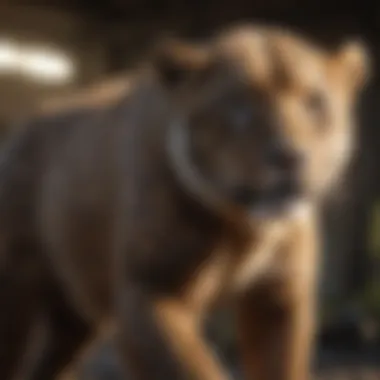
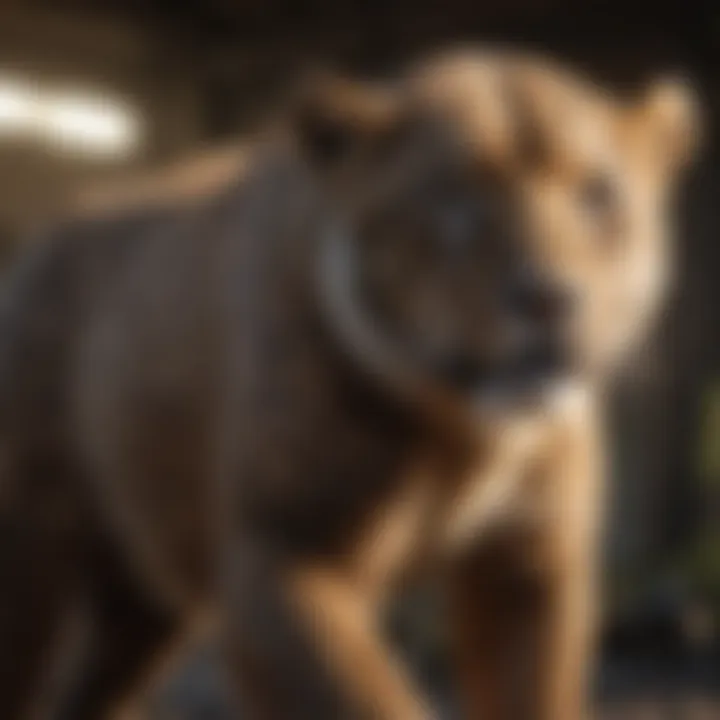
In summary, recognizing the emotional ties individuals and corporations have to wildlife and their collective social responsibility is paramount. These motivators can lead to increased donations and enhanced conservation strategies that prioritize the protection of endangered species.
Strategies for Successful Fundraising
In the realm of conservation, particularly concerning endangered animals, effective fundraising strategies are the lifeblood of ongoing efforts to preserve biodiversity. The significance of these strategies cannot be overemphasized; they not only secure necessary funds but also help to build awareness and foster deeper connections between donors and the cause at hand. A thoughtful approach can transform mere financial contributions into a foundation for sustained conservation efforts.
Effective Communication Techniques
Storytelling in Conservation
Storytelling is not just a narrative tool but a gateway to connecting people with wildlife. It captures the essence of conservation and humanizes the often-abstract statistics surrounding endangered species. Each tale told—be it about a particular species, their habitat, or the challenges they face—creates a vivid picture that resonates emotionally with potential donors. The key characteristic of storytelling in this context is its ability to evoke empathy, making the appeal for support feel personal rather than transactional. For instance, consider the poignant story of an orphaned elephant as it finds its way in a sanctuary, reflecting both loss and resilience. A narrative like this can evoke a sense of urgency and a desire to contribute, making it a powerful fundraising tool.
The unique feature of storytelling is its versatility. It can be conveyed through various media—videos, written articles, podcasts—allowing conservation organizations to reach diverse audiences. However, it’s essential to balance emotional appeal with factual accuracy. Misrepresenting a species’ plight, even with the best intentions, can backfire and erode trust in the long run.
Visual Media Use
Visual media serves as a companion to storytelling, enhancing engagement through striking images and videos that capture the beauty and struggles of wildlife. The use of high-quality visuals can draw immediate attention and provoke a visceral reaction in viewers. The key characteristic here is immediacy; a powerful photograph of a snow leopard in the wild or an alarming image of deforestation can provoke an instant response, compelling individuals to act, whether by donating or sharing the content with others.
A unique aspect of visual media is its broad appeal. It crosses language barriers and can be easily shared across platforms, amplifying the message far beyond the original audience. This capacity to reach and impact large numbers of people makes it a preferred method in modern fundraising efforts. Yet, organizations need to remain aware of the risk of image fatigue—where overuse of certain visual media may lead to desensitization among audiences, thus diluting its impact.
Leveraging Social Media Platforms
In an age dominated by digital interactions, social media platforms stand out as monumental tools in fundraising campaigns. They provide accessible forums for organizations to share their missions and to connect with audiences on a personal level. Utilizing platforms like Facebook, Instagram, and even Reddit enables conservation groups to engage with communities, thereby increasing visibility and encouraging engagement. Here are a few important points to consider:
- Direct Engagement: Social media allows for direct communication between organizations and potential donors, fostering a community around the cause.
- Rapid Sharing Capability: Posts can be shared, retweeted, or liked, rapidly expanding the reach of any message.
- Storytelling Power: Platforms favor visual content, making it easier for organizations to share compelling narratives through photos and videos.
In summation, the blend of effective communication techniques—especially storytelling and visual media—alongside smart usage of social media, forms the backbone of successful fundraising strategies in the conservation field. By leveraging these tools, organizations can enhance their outreach efforts and encourage meaningful contributor relationships, which are essential for preserving endangered species.
Impact Assessment of Donations
Understanding the impact of donations on endangered animal conservation is crucial. It helps stakeholders, including donors, organizations, and the public, appreciate where their contributions are going, and how they are turning the tide against extinction. The evaluation of these donations often boils down to tangible outcomes, underlining the necessity for a structured approach to assess their effectiveness.
This section underscores the merits of measuring impact, which ultimately shapes future fundraising strategies and enhances donor trust. By tracking results, organizations can refine their programs, attract additional support, and most importantly, ensure that real benefits reach endangered species in dire straits.
Case Studies of Successful Initiatives
Rehabilitation Programs
Rehabilitation programs play a vital role in rescusing species that find themselves in situations they can't escape from alone. Such initiatives focus on providing medical care, nutrition, and a safe environment for animals recovering from trauma or distressing circumstances. One key aspect of these programs is their holistic care approach, which ensures not just the survival of individual animals, but also allows them to thrive in the long run.
Due to their nature, these programs become popular choices for donors who are emotionally invested in the well-being of wildlife. Notably, organizations like the David Sheldrick Wildlife Trust focus specifically on orphaned elephants, providing a unique nurturing environment. The undeniable advantage of rehabilitation programs lies in their two-fold impact: they restore individual animals while often fostering broader public awareness and support for conservation efforts. This genuinely becomes a win-win situation—animals get quality care, and the public learns about their plight.
Habitat Restoration Projects
Addressing the root cause of endangerment often involves habitat restoration projects. These initiatives target ecosystems that have been disrupted or destroyed, aiming to return them to a functional state. The preservation of habitats is a key characteristic of these projects, making them an essential piece of the conservation puzzle.
One standout feature of habitat restoration is its scale. For instance, projects like the reforestation of the Atlantic Forest in Brazil provide not only improved living conditions for countless species but also contribute to global ecological health. While they might require substantial investment and lengthy timelines to see results, their long-term benefits are significant. Such projects often yield enhanced biodiversity, which ultimately contributes toward minimizing extinction rates.
Challenges in Measuring Impact
Variable Success Metrics
The assessment of success isn’t a straight path. Variable success metrics often cloud the evaluation process, as successes can be interpreted differently by various stakeholders. This variability can stem from differing goals, timelines, or even methodologies employed in various projects. Having a clear set of metrics is crucial for ensuring that everyone is on the same page regarding what constitutes success.
The difficulty in adopting universal measurables can present a challenge, but it also opens discussion about the nuances of impact assessment in conservation. Organizations that tackle this variability can set themselves apart, demonstrating their commitment to transparency and continuous improvement. This makes aiming for common goals a worthwhile endeavor, even amidst differing interpretations.
Long-Term Sustainability
When evaluating donations, long-term sustainability serves as a critical factor. The aim is not just to fix immediate issues but also to bolster efforts that ensure the ongoing viability of efforts and programs. A significant aspect of these sustainability initiatives is the commitment to evolving and improving practices over time based on assessment feedback.
Sustainability brings its unique challenges, especially when faced with short-term funding cycles that many organizations rely on. However, promoting sustainable initiatives often attracts recurring donations, as supporters recognize the value in investing for the long haul. A commendable example of this is how organizations foster ‘adopt-a-wildlife’ programs that encourage ongoing support while developing lasting connections between donors and their adopted animals.
Ethical Considerations in Donation
In the realm of conservation, ethical considerations are paramount. Donations play a crucial role, but they bring a set of challenges that must be addressed to ensure the integrity of conservation efforts. Ethical practices not only enhance transparency but also build trust among donors, conservation organizations, and the communities that depend on these efforts. By focusing on ethical considerations, we ensure that the aid provided truly makes a difference, rather than becoming just another drop in the ocean of well-meaning initiatives.
Transparency and Accountability
Financial Reporting Standards
Financial reporting standards are a cornerstone of ethical fundraising and expenditure in conservation. These guidelines dictate how organizations track and share their financial activities. A key characteristic of these standards is their emphasis on accuracy and clarity. For conservation organizations, adopting such standards can be a beneficial choice because it promotes credibility. When donors see reliable financial reports, they are more likely to feel secure about where their contributions are going.
The unique feature of financial reporting standards lies in their comprehensive nature. They require organizations to not only report income and expenses but also provide insight into how funds are allocated. This feature enhances accountability and allows donors to see the impact of their contributions, which can encourage further support.
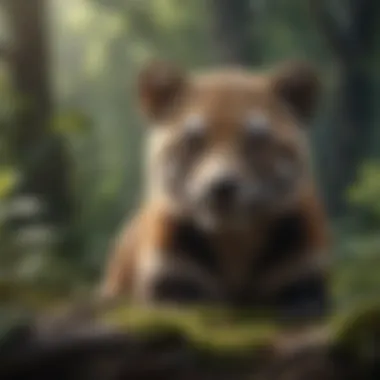

However, there can be disadvantages too. If an organization struggles to meet these standards, it might face scrutiny and loss of donor confidence. Maintaining compliance with these standards can be resource-intensive, which might divert funds away from conservation projects themselves.
Impact Reporting
Impact reporting focuses on assessing and communicating the effectiveness of conservation efforts funded by donations. This aspect isn't just about stating what the money was used for; it's about demonstrating tangible results. The key characteristic of impact reporting is its emphasis on outcomes rather than just activities. For instance, instead of only highlighting how many trees were planted, effective impact reporting illustrates the improved habitat that supports wildlife.
This focus on outcomes makes impact reporting a beneficial choice for this conversation. It shows donors the real-world benefits of their contributions, which can lead to a more sustained commitment to conservation efforts. The unique aspect of impact reporting is that it often involves measurable metrics – things like population recovery rates for endangered species or increases in biodiversity in restored habitats.
On the flip side, creating detailed impact reports can be challenging. It requires significant data collection and analysis, not to mention the time needed to communicate these findings to stakeholders. If done poorly, it can lead to misunderstandings about the actual impact of the donations and cause confusion among donors.
Donor Influence on Conservation Practices
Donor influence can take many forms. While it might seem benign, it can shape the direction of conservation projects significantly. For example, some organizations may prioritize projects based on what donors are most interested in, rather than where the need is greatest. This practice can lead to an imbalance in conservation priorities, focusing attention on charismatic species or popular ecosystems at the expense of less glamorous but equally important areas.
In this delicate dance, it’s essential for organizations to maintain a balance. They need to engage donors and their interests while staying true to their mission and the ecological needs. Through communication and education, organizations can inform their donors about the complexities of ecosystems and the interplay of various species within them. Ultimately, fostering an educated donor base can enhance the overall effectiveness of conservation efforts.
Engaging Donors Beyond Financial Contributions
In the realm of wildlife conservation, financial contributions are undeniably vital, serving as the backbone of numerous initiatives aimed at preserving endangered species. However, delving deeper, it becomes clear that engaging donors beyond simply monetary gifts can add immense value to conservation efforts. Such engagement not only cultivates a community of support but also harnesses the diverse skills and passions of individuals who seek to make a difference.
Contributors can often feel like they are just another cog in a well-oiled machine, sending off their hard-earned dollars into a void. Yet, when organizations strive to involve donors in more hands-on ways, it fosters a sense of ownership and pride. Here’s a breakdown of how such engagement unfolds:
- Creating Awareness: Engaged donors gain a fuller understanding of the challenges facing wildlife, leading to informed discussions around conservation strategies. This awareness is not only beneficial for the individuals involved but also ripples out to their circles, creating a larger network of advocates.
- Skill Utilization: Many potential donors bring unique skills that can be instrumental in conservation efforts, from marketing expertise to scientific knowledge. By providing volunteering opportunities, organizations can mobilize these skills for greater impact, making the effort united and multifaceted.
- Personal Growth: Many individuals find that getting involved beyond financial contributions enhances their own lives. They develop a deeper understanding of ecological issues, meet like-minded individuals, and experience personal satisfaction from contributing time and talents.
Ultimately, the objective is to forge a lasting bond between the conservation community and its supporters. This relationship fosters loyalty, ensuring that donors remain engaged – not just in times of giving, but throughout the conservation efforts, making them integral to the mission at hand.
Volunteering Opportunities
Volunteering is one of the most powerful ways to engage donors beyond financial assistance. When individuals commit their time to conservation activities, they transform themselves from mere spectators into active participants. It’s a simple yet profound shift – these volunteers come to understand not just the mission of conservation but the integral challenges faced by endangered species.
Types of Opportunities: These can range from hands-on fieldwork, such as species monitoring, to administrative roles within nonprofits that address conservation.
Some key volunteering roles include:
- Habitat Restoration Projects: Volunteers get their hands dirty planting trees, removing invasive species, or building structures that can provide sanctuary for various wildlife.
- Species Monitoring: This involves tracking wildlife populations, collecting data, and helping researchers with field studies. There’s something uniquely fulfilling about observing endangered creatures in their environment.
- Community Education: By leading workshops or school programs, volunteers can share their passion for wildlife and the importance of conservation with younger generations.
In the end, engaging donors in volunteer work not only amplifies resources but builds a community of advocates empowered to influence change.
Advocacy and Political Action
Advocacy serves as a vital bridge between conservationists and the broader society, often driving significant changes in public policy that benefit endangered species. Engaging donors in advocacy and political action isn’t just beneficial—it's essential. When passionate individuals come together to support policy changes, their collective voice can be dramatically more influential.
Importance of Advocacy: Without advocacy, many conservation efforts can remain sidelined. Donors participating in advocacy can work to:
- Influence Legislation: Engage in lobbying for laws that protect endangered species and their habitats. This could mean pushing for stricter penalties for poaching or advocating for funding for conservation programs.
- Raise Public Awareness: Help disseminate information that illuminates the plight of endangered species, creating a groundswell of support amongst the general public.
- Mobilize Grassroots Campaigns: Use personal networks and social media platforms to navigate change at local or national levels. It’s a way of saying, "This is important, and we need action."
Engaging donors in advocacy fosters a deeper connection to the cause and mobilizes a powerful force for change, augmenting the impact of financial donations.
"One individual can make a difference, but together, we can change the world."
Through a combination of volunteerism and advocacy, donors become more than just financial backers; they evolve into committed conservation ambassadors. This holistic approach to engagement not only fosters community but strengthens the movement to protect endangered wildlife effectively.
Future Trends in Animal Conservation Donations
The landscape of animal conservation donations is rapidly changing. As global challenges grow, so do the methods of funding and resource mobilization. The importance of understanding future trends is critical for conservationists, environmental organizations, and donors alike. It allows all players to adapt strategies, ensuring effective use of funds and amplifying impacts where they are needed most. Moreover, it encourages innovation, nurtures partnerships, and ultimately, fortifies the movement towards saving endangered species.
Innovative Funding Models
Blockchain for Transparency
Blockchain technology has emerged as a significant contender in the realm of transparency for donations aimed at conservation. At its core, blockchain is a decentralized digital ledger that securely records transactions. This characteristic ensures that donors can follow their funds throughout the donation journey, establishing trust between contributors and organizations.
One of the unique features of blockchain is its ability to provide real-time tracking of donations. This brings a level of accountability that traditional funding methods often lack. For instance, if a donor contributes $100 to a specific wildlife preservation program, they can see precisely how those funds are allocated and utilized. This transparency builds confidence and encourages more significant donations.
However, despite its many advantages, blockchain does come with challenges. Its complexity may be off-putting for some potential donors, who might not fully understand how it operates. Additionally, setting up blockchain systems can require substantial initial investment, which could divert resources away from immediate conservation needs.
Crowdfunding Initiatives
Crowdfunding represents another innovative funding model that has gained momentum in the conservation sector. By leveraging digital platforms, organizations can reach a broader audience to raise funds for specific projects. Unlike traditional funding streams, crowdfunding enables anyone, regardless of their financial heft, to contribute towards a cause they are passionate about.
The key characteristic of crowdfunding is its ability to create a community around a project. Supporters not only provide funds but also become advocates for the cause, sharing information on social media and encouraging others to contribute as well. This grassroots approach is particularly beneficial in raising awareness for lesser-known endangered species or urgent response campaigns.
A notable advantage of crowdfunding is the relatively low entry barrier for participation. Donors can contribute any amount they deem appropriate, making it accessible to a diverse range of supporters. However, the reliance on digital platforms means that outreach must be consistently maintained, and there’s always the risk of campaigns failing to reach their target goals, leaving projects underfunded.
Global Collaborative Efforts
As challenges in wildlife conservation become increasingly complex, collaboration emerges as a necessity rather than an option. Efforts across borders are essential to tackle issues like wildlife trafficking, habitat destruction, and climate change. In the future, we can expect to see even more integrated approaches combining resources, expertise, and networks.
Through shared platforms and joint initiatives, conservation organizations, governments, and private sectors can pool their resources for greater impact. Examples include multinational task forces working to restore habitats in Africa while also combating illegal poaching rings. This type of collaborative effort leverages the strengths of each partner, creating a multifaceted approach to conservation issues.
With ongoing global crises, the necessity for these collaborative efforts will only grow. Investing in building relationships and trust among stakeholders will be vital to ensuring a sustainable future for endangered animals.



